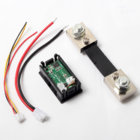Thats what I mean it just needs to be a short burst of power not a latched 12V to the solenoid. Looking at the Inkbird timer if run in single shot A is the programed 5s (or whatever) no voltage on B for that time then B turns on when A turns off latched until the reset.
It needs to provide power for the desired amount of time. 0.25s isn't a momentary burst. I'm sure you can figure out if your other timer is able to switch power (has built in relay) or trip an external relay. The Sestos has 4 timers but only two drive internal relays (switching 12V). The other two, B and D, are just used for pauses. The timers always run in sequence A through D. In single shot mode, the timer stops after D until triggered to start with A again.













